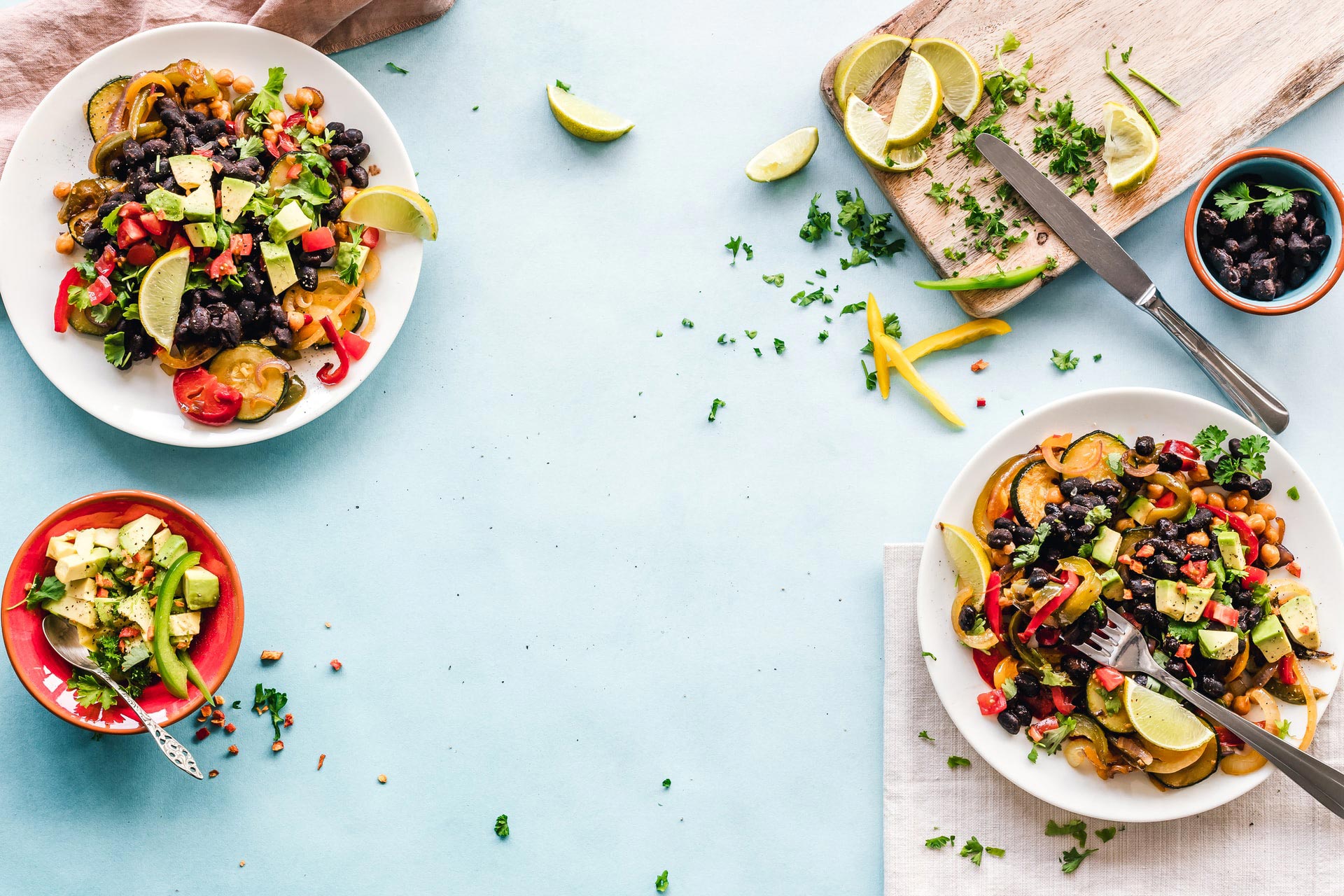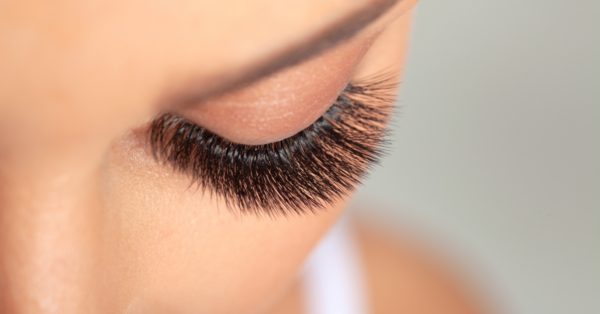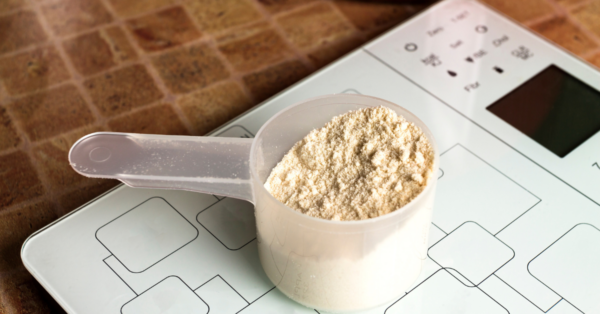Do you feel a little lost sometimes when you hear confusing and conflicting messages from all the latest diet trends?
We can all agree that food is important and that what we eat has enormous impacts on our health and quality of life. But what should we be eating in order to live our best lives?
Everyone seems to have an opinion on the topic. But what does science say?
What is a Healthy Diet?
There are so many different diets and eating programs out there that it can be hard to keep them all straight, let alone figure out which ones are healthy and which aren’t.
The truth is that many of them can be healthy, and the ones that are healthy have some basic principles in common.
Experts may not always agree on the nitty-gritty details, like whether you should eat animal products, coconut oil, or lectins. But there are a few core concepts that scientific research has reinforced time and time again.
If you break down DASH, the Mediterranean diet, or what people in the Blue Zones eat, you’ll start to notice some common themes:
- They focus on whole foods and limit processed foods, minimizing added sugar, refined carbohydrates, and sodium
- Vegetables and fruits make up the largest portion (by volume) of food eaten
- They limit red meat, choosing more fish and lean poultry
- They choose healthy fats as their primary fat sources
- Healthy diets are complemented by other habits that promote health, such as exercise, sleep, and stress management
Any diet that adheres to these core concepts can be considered healthy eating.
Honestly, I’ve never heard it said better than by Michael Pollan in his 2011 book Food Rules: An Eater’s Manual: “Eat food, not too much, mostly plants.” (1) If you can memorize that simple sentence, you’ve pretty much got the key to healthy eating in your pocket. So keep that in the back of your mind while we break down healthy eating in more detail.
Fundamentals of a Healthy Diet
Diets are made up of nutrients. Nutrients provide our bodies with energy, with building materials, and with substances involved in all of the processes that happen inside us, keeping us healthy and alive.
Nutrients are classified based on how much of them we need. Macronutrients are nutrients we need a lot of, while micronutrients are nutrients we need a little bit of.
The goal of a healthy diet is to ensure that we get all of the nutrients we need in the right amounts – not too much and not too little. Choosing certain sources of nutrients over others can help us achieve that delicate balance.
Macronutrients
Macronutrients are the nutrients that we need a lot of — relatively speaking.
They fall into 3 categories: carbohydrates, proteins, and fats. How much of each macronutrient you consume relative to the others will depend on your individual nutritional goals and preferences, but they are all necessary and will each be present in a healthy diet.
Carbohydrates
The main function of carbohydrates is to provide us with energy. There are 3 general types: sugars, starches, and fiber.
- Sugars provide quick energy because they are easily broken down and quickly absorbed. This also means a sharp increase in blood sugar. Sugars are found naturally in most fruits, dairy, and honey. They are also extracted and refined from plants such as sugarcane, beets, agave, and maple trees. These refined sugars are often used to add sugar to processed foods.
- Starches are more complex to break down and take longer to absorb, especially if they are present in foods that also contain fiber. They therefore provide a more slow, steady source of energy and enter the bloodstream more slowly. Starches are found in starchy vegetables like potatoes, carrots, and winter squash, as well as in grains, beans, and legumes.
- Fiber is indigestible plant material. It doesn’t provide us with any energy directly. What is does is promote digestive health by improving stool regularity and consistency, and also by feeding the healthy bacteria in our gut. Fiber is found in whole fruits and vegetables, whole grains, beans, and legumes.
People who are trying to eat a healthy diet usually try to avoid too much sugar, especially added sugar, and get plenty of fiber. This means limiting processed foods and refined carbohydrates like white rice or anything made with white flour.
Whole fruits and vegetables, whole grains, beans, and other legumes contain the types of carbohydrates that promote good health.
Protein
Consuming protein provides us with amino acids, which are the building blocks of both structural and functional elements within our bodies. For example, collagen is a protein our body makes which provides structural support to our connective tissues.
Enzymes that catalyze chemical reactions in your body are proteins.
Muscle, which allows you to move, breathe, digest, and pump blood, is made up primarily of protein.
Your body takes the protein sources you consume, breaks them down to amino acids, and rebuilds them into all these different proteins.
Sources of protein include meat, poultry, fish, dairy, eggs, beans and other legumes, seeds, nuts, and grains.
Protein quality (or biological value) is evaluated based on the content of amino acids, how easily it is absorbed, and how efficiently it is used by the body.
Animal sources of protein tend to be assigned higher biological values than plant sources, with eggs topping the list. However, biological value isn’t a perfect measure, and it is definitely possible to consume a variety of lower biological value protein sources to achieve an overall adequate protein diet. (2) (3)
In other words, a healthy diet can include animal protein sources, although it doesn’t have to. The best idea is probably to get your protein from a variety of different sources.
Fat
Fat is a rich energy source, but it also has many other functions in the body.
Fats help regulate our body temperature by insulating us. They protect our organs and form the membranes that enclose each one of our cells. They are involved in cell signaling and in chemical reactions that regulate many important bodily processes and systems. (4)
Fats are found in oils, nuts, seeds, dairy (especially butter and cheese,) fatty meats, and oily fish. Fats can be saturated or unsaturated, depending on the type of molecular bonds they contain. Generally speaking, saturated fats tend to come from animal sources and are solid at room temperature. Diets high in saturated fats are associated with a greater risk of cardiovascular disease and other negative health outcomes. (5) (6) (7)
Unsaturated fats (monounsaturated or polyunsaturated) tend to come from plant sources and are liquid at room temperature. They are generally healthier than saturated fats, with some caveats.
Exceptions are coconut and palm oil, which come from plants but are primarily saturated fat (and solid at room temperature.) Coconut oil, in particular, is controversial, as the jury is still out at this time as to whether it confers the same negative health effects as the types of saturated fats that come from animals.
Trans fats are artificially produced saturated fats made by hydrogenating (changing the hydrogen bond structure of) previously unsaturated plant fats. These are pretty much universally agreed to be very unhealthy.
There are two types of unsaturated fatty acids that are considered essential, meaning that our bodies need but cannot make them. They are involved in many signaling pathways in the body and we need to consume them both, but the typical Western diet tends to provide too much omega-6 and not enough omega-3.
Omega-6 fats are found in high amounts in certain plant oils with soybean, sunflower, corn, and cottonseed oils being among the highest. Soybean oil is present in many processed foods, which makes it a large contributor of omega-6 fats in the typical Western diet.
Omega-3 fats are found in high amounts in oily fish and flaxseed oil.
It’s ideal to choose a combination of oils in your diet that don’t provide too much saturated fat or omega-6 (again, some is essential but most of us get too much) and provides enough omega-3. Oleic acid is an omega-9 fatty acid contained in high amounts in olive and avocado oils which is not essential but is thought to have several health benefits (8) (9).
These two oils are also low in saturated fat and omega-6 fatty acids. It might be a good idea to make one of them (or another oil with a similar profile) your primary cooking oil. Then you can reserve rich saturated fat sources for specific things, like baking or that occasional piece of ribeye.
You can avoid excess omega-6 fats by limiting your intake of processed foods.
Last but not least, the easiest and most efficient way to get omega-3 fats is from fatty fish or fish oil. The American Heart Association recommends eating 2 servings of fish, especially fatty fish, per week (10).
If you are a vegetarian or vegan, you can use flaxseed oil, but the form of omega-3 found in flaxseed oil isn’t used as efficiently by the body as the form found in fish (11).
Micronutrients
Micronutrients are nutrients that we need in small amounts. They play important roles in every cell, organ, and system in your body.
- Vitamins A, B (1, 2, 3, 5, 6, 7, 9 and 12) C, D, E and K
- Minerals like calcium, iron, magnesium, potassium and several others
- There are some micronutrients that don’t fit into either the vitamin or mineral categories, but that contribute to good health in ways we are only beginning to understand, such as choline in egg yolks and various phytochemicals found in fruits and vegetables.
If you eat a healthy diet that includes a variety of whole foods from plant and animal sources, you shouldn’t have a problem getting all the micronutrients you need from foods.
If your diet is limited for any reason, you might want to discuss the benefits of a multivitamin or specific supplements with your healthcare practitioner.
Benefits of Eating Healthy
There are plenty of reasons to eat a healthy diet. You may want to:
- Achieve or maintain a healthy weight
- Prevent chronic diseases like heart disease, diabetes, and kidney disease (12) (13) (14) (15)
- Improve your outcomes if you have a chronic disease (16)
- Lower your risk of cancer (17) (18)
- Prevent cognitive decline and lower risk of Alzheimer’s Disease (19) (20)
- Improve gut health (21)
Eating a healthy diet has an enormous number of scientifically proven health benefits. Those aside, it can also just make you feel good. By eating healthy, you are doing something positive for yourself, which can be quite motivating and uplifting.
Transitioning to a Healthier Diet
Transitioning to eating healthier is a process. Don’t expect yourself to magically transform your diet overnight.
Our eating habits develop over years or even decades, and they are not easy to change.
Here are some tips to get yourself started.
- Make one change at a time. This way you can devote your focus to it and not feel overwhelmed.
- Tackle something easy and impactful first. Success can be very motivating.
- Allow yourself time to adjust to each change. For example, if you are using less salt or sugar, it may take some time for your taste buds to adjust, but they will.
- Increase or decrease things gradually. Let’s say you want to cut way down on red meat, but you are used to eating it every day. It will be really hard to cut it out completely right away. Start by replacing it with chicken, fish, or a vegetarian meal twice per week. Then four times. Keep going until it eventually becomes an occasional treat (or whatever your goal is.)
- Choose changes that you can sustain. The benefits of eating healthy don’t come from doing it for a month and then going back to the way you ate before. These are long-term commitments, so don’t make one that is going to make you miserable.
If you “slip up,” don’t sweat it too much. Forgive yourself, and try again tomorrow.
If there is a certain change you are consistently finding it too difficult to make, then maybe you aren’t ready to make that one right now. That is okay – try something else, and maybe come back to that tricky one later. Above all, remember to be kind to yourself.
What to Eat
- Whole, unprocessed or minimally processed foods
- Fruits and vegetables
- Fresh is best
- Frozen or canned can be perfectly healthy, although some nutrients may be lost or degraded over time, which is why fresh is ideal. Always pay attention to what liquid the fruits or vegetables are canned in: water, oil, syrup (light or heavy), juice, is there a lot of salt added? It’s usually a good idea to rinse before eating.
- Dried fruit is fine, you just have to be careful with portions. Since the water is removed, the volume is much smaller for the same amount of calories.
- Juice is the least healthy version. It contains all of the sugar of the original fruit or vegetable and none of the fiber, contributing nothing to satiety (that feeling of fullness).
- Whole grains, starchy vegetables, and legumes
- Fish (try to include some fatty fish twice weekly for those omega-3 fats), poultry and lean meats (if you choose)
- Eggs
- Moderate amounts of dairy if you can tolerate it – dairy is a great source of calcium and provides probiotics if fermented (like yogurt or kefir). Low-fat dairy will contribute less to saturated fat intake than full-fat.
- Nuts and seeds
- Healthy fats: olive oil, avocado (oil or just whole avocados), fatty fish
- Herbs and spices: contribute flavor and beneficial plant compounds
- Fluids:
- Drink plenty of water. Tea and coffee may have health benefits and modest amounts of alcoholic beverages like wine (1 serving a day for women or 2 for men) may be part of a healthy diet, but you don’t need to start drinking caffeinated beverages or alcohol if you don’t already.
- Variety is important. If you mix up the fruits, vegetables, grains, and protein sources you eat, you should have no problem getting in all your required nutrients.
What to Avoid
- Processed foods
- Refined carbohydrates (like white bread, white pasta, white rice, etc.)
- Added sugar
- Excessive salt
- Excessive saturated fat
Healthy Portions
Many of the benefits that come from eating a healthy diet are amplified by maintaining a healthy weight. To do that, we need to not only eat the right foods but eat them in the right amounts.
The USDA recommends filling half your plate with fruits and vegetables. This is in line with what the healthiest diets around the world consist of. So rather than measuring out a concrete serving size, we can just remember that about half of what we eat by volume should be fruits and vegetables, emphasis on the vegetables.
Around 20-25 g of protein per meal is enough for most people, assuming they are eating 3 meals per day. Meat, poultry, and fish contain about 7 g protein per oz, so you can achieve this with a 3-4 oz serving, which is around the size of a deck of cards. Eggs contain about 6 g protein each, while 6 oz Greek yogurt contains 18 g and a half cup of beans averages around 7-11 g. (22)
A good rule of thumb for your starches is a 1 cup serving, or about the size of your fist. This will usually contain around 200 calories and 45 g of carbohydrate. Measure when cooked, as most grains or grain products take on water and expand as they cook.
Get reacquainted with your hunger cues and start listening to your body. You may need more energy from food some days and less on others.
Eat mindfully.
Mindless grazing or snacking can lead to weight gain because you consume many more calories than you realize.
When you eat a meal, take your time and give your stomach a chance to tell your brain that you are full. Wait and see if you truly still feel hungry, and if you do then go for seconds.
Healthy Lifestyle Habits
To achieve the full benefits of a healthy diet, we need to form some additional habits that contribute to an overall healthy lifestyle in important ways.
Physical activity has many health benefits and can help achieve your weight goals by burning extra calories and maintaining muscle tissue. This means taking time for scheduled exercise and also just moving more throughout your normal day.
Sleep is crucial. It is the time our bodies need to rest and rejuvenate. Getting the recommended 7-9 hours of quality sleep per night will help all of the hard work you are doing during the day to really sink in. This also means creating routines that help you to improve your quality and duration of sleep.
Stress management is also extremely important. High levels of chronic stress can be a barrier to good health in many ways. Taking time for self-care, practicing mediation, or using any other tools you have to help manage stress will help you to realize all the benefits of a healthy diet.
Conclusion
Many different diets can be considered as healthy eating patterns.
The most healthy ones have a few key things in common.
Follow whatever diet works best for you, provided that you eat whole foods, lots of plants, mix it up for variety and eat the right amounts.
- Pollan, Michael, and Maira Kalman. Food Rules: an Eater’s Manual. Penguin Books, 2011.
- https://www.ncbi.nlm.nih.gov/pubmed/26545252
- https://www.ncbi.nlm.nih.gov/pmc/articles/PMC3905294/
- NIH, National Institute of General Medical Sciences (NIGMS). “The biology of fats in the body.” ScienceDaily. ScienceDaily, 23 April 2013. www.sciencedaily.com/releases/2013/04/130423102127.htm.)
- https://www.ncbi.nlm.nih.gov/pubmed/26068959
- https://www.ncbi.nlm.nih.gov/pubmed/29174025
- https://www.ncbi.nlm.nih.gov/pubmed/25692500
- https://www.ncbi.nlm.nih.gov/pubmed/27457635
- https://www.ncbi.nlm.nih.gov/pubmed/23278117
- https://www.ahajournals.org/doi/10.1161/CIR.0000000000000574
- https://www.ncbi.nlm.nih.gov/pubmed/16188209
- https://www.ncbi.nlm.nih.gov/pubmed/25430608
- https://www.ncbi.nlm.nih.gov/pubmed/32138628
- https://www.ncbi.nlm.nih.gov/pubmed/25447615
- https://www.ncbi.nlm.nih.gov/pubmed/24714352
- https://www.ncbi.nlm.nih.gov/pubmed/32321528
- https://www.ncbi.nlm.nih.gov/pubmed/32336153
- https://www.ncbi.nlm.nih.gov/pubmed/32359135
- https://www.ncbi.nlm.nih.gov/pubmed/29974344
- https://www.ncbi.nlm.nih.gov/pubmed/31209456
- https://www.ncbi.nlm.nih.gov/pubmed/28388917
- https://www.todaysdietitian.com/pdf/webinars/ProteinContentofFoods.pdf









2 Responses
Your insights are always spot on. Another great article!
What a remarkable article! The way you’ve tackled the topic with such precision and depth is commendable. Readers are sure to gain a great deal from the wealth of knowledge and practical insights you’ve shared. Your profound understanding of the subject shines through every part of the piece. I’m eager to see more of your exceptional work. Thank you for offering your expertise and providing us with such enlightening and comprehensive content.